Everything You Need to Know About Offering Your Breastfed Baby a Pacifier.
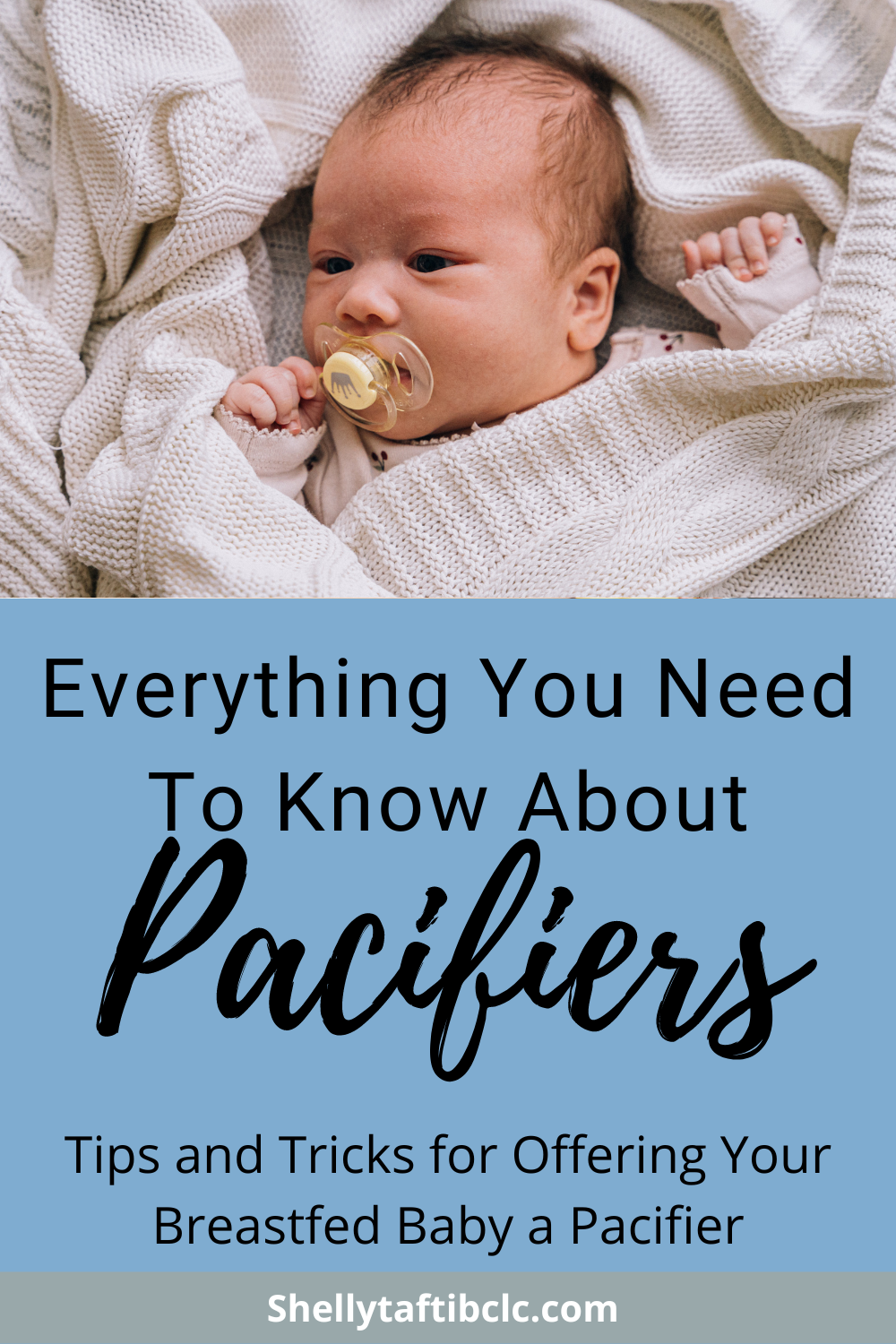
Wondering if you should offer your breastfed baby a pacifier? Read on to learn everything you need to know to make the best decision for you and your family!
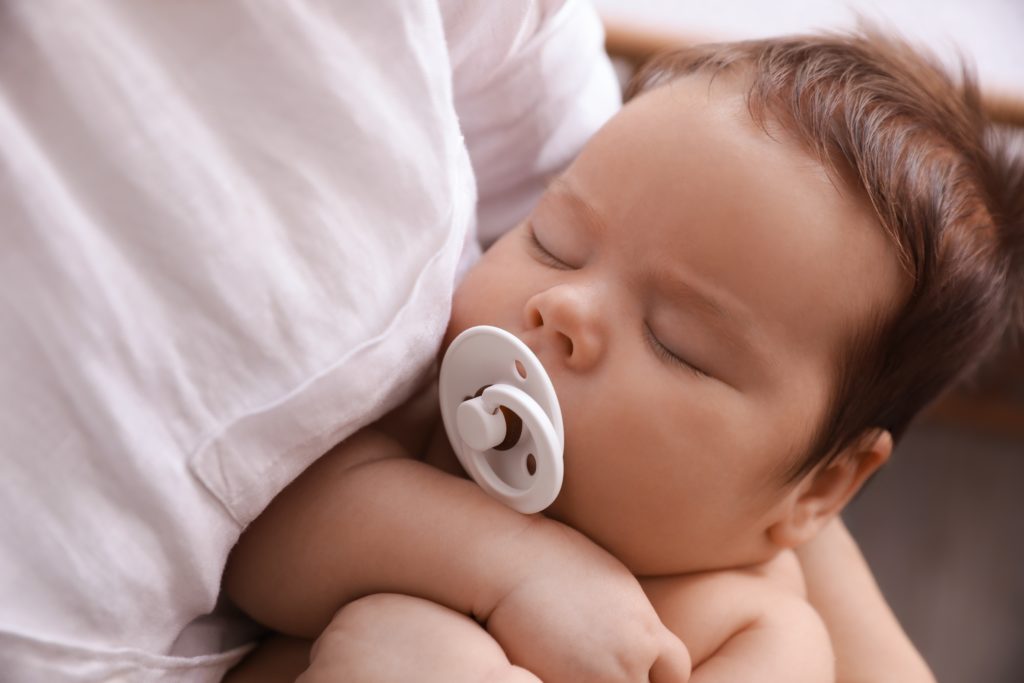
History of Pacifiers:
Pacifiers were first referred to in medieval literature in 1473. They were often made of rags or linen, often with hard foodstuffs, such a meat or animal fat, or sugar balled up tightly. The foodstuffs were used to form the linen into a hard ball for the infants to suck on. Pacifiers during this time were more about providing soothing from teething pain.
By the 1900s, pacifiers were developed that looked more like the modern version, often made of rubber. They were more often used for soothing with suckling rather than teething by this point.
Pacifiers and Breastfeeding:
According to the AAP, if breastfeeding your baby, it’s advised to wait 4 weeks before introducing a pacifier, or until breastfeeding is well established.
This is because:
- Pacifiers can, at times, cause poor latching or sucking at the breast because some babies get confused by sucking on a pacifier. Pacifiers are a completely different texture than the parent’s nipple, and involve a completely different way of suckling. For SOME babies, switching between breast and pacifier can be confusing and result in a painful latch.
- It can suppress feeding cues. Babies who are sucking on a pacifier are less likely to show hunger cues that are easily seen by parents. This can result in less frequent feedings throughout the day, resulting in more weight loss for baby and low milk supply for the parent.
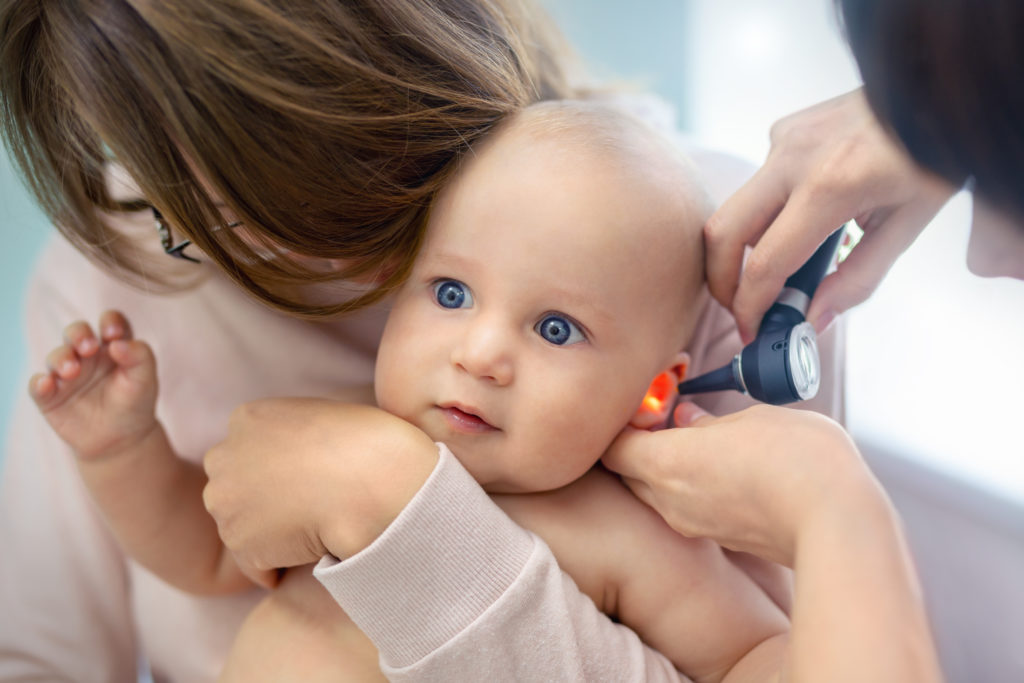
Cons of Pacifiers:
Some research has shown that pacifiers can increase the risk of ear infections. The research does indicate the more a baby uses a pacifier, the greater the risk for ear infections.
There is also research that shows babies who use pacifiers breastfeed for shorter durations than those who don’t. Unfortunately we are not sure why this occurs.
Other research has shown that pacifier use can result in dental problems, increasing the need for orthodontia when the baby is older. This means more braces and money for you!
Pros of Pacifiers:
Some babies do have a really strong need to suckle. And while it is ideal to keep your baby at the breast for all their sucking needs, it’s not very realistic in our culture, is it? So if your baby does have a stronger need for suckling, a pacifier can be useful as needed.
Research also shows that pacifier use at night can reduce the risk of SIDS. The American Academy of Breastfeeding does recommend offering your baby a pacifier for sleep at night after 3-4 weeks of age.
What Type of Pacifier Should You Use?
If you have been in the baby section of any store recently, you would have noticed that there are sooooo many options for pacifiers. So how do you know which one will work best for your baby?
I just want to clarify – the following suggestions are just that – suggestions. In the end, whatever pacifier your baby likes and works for them is great!
There are many different shapes of pacifiers. Let’s go over the main four shapes: orthodontic; butterfly; cherry; and cylindrical.
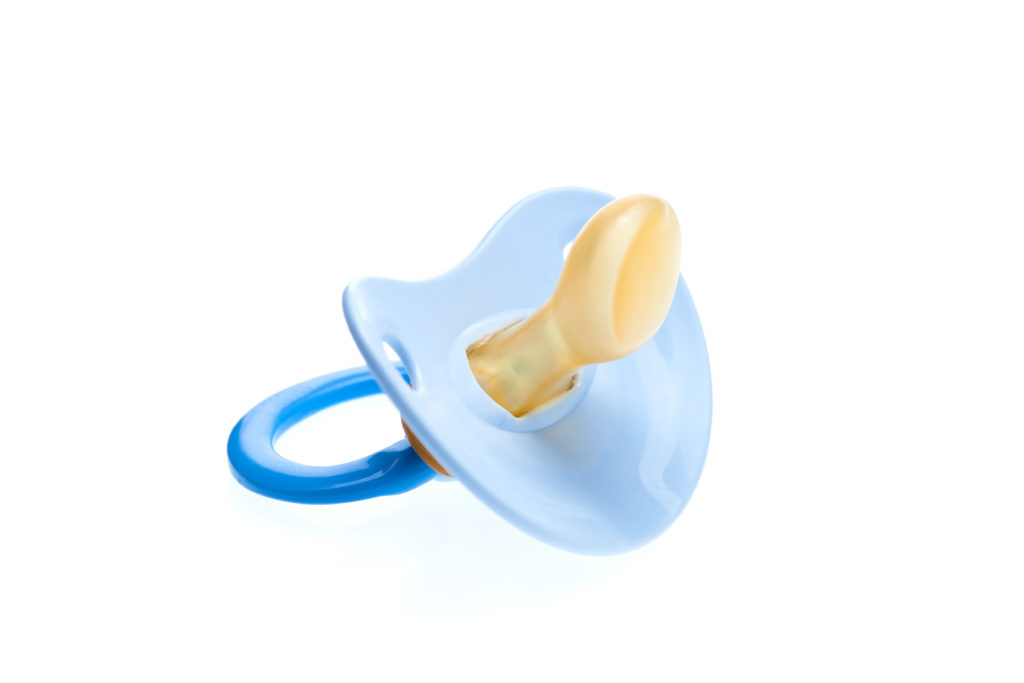
Orthodontic pacifiers are often slanted and flat, with the bottom flatter than the top. While orthodontic can sometimes work well with babies who have high palates, they often encourage biting, which is definitely not something we want to teach the baby to do as they then might do it at the breast!1
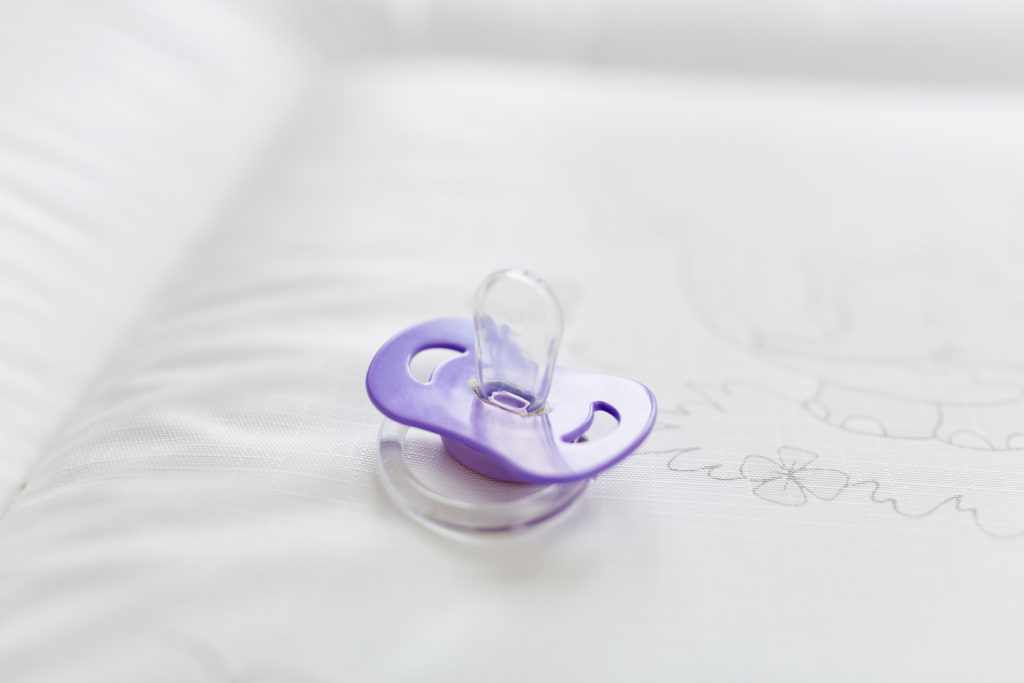
The butterfly pacifiers are often level but also flat. This can keep the baby from cupping their tongue properly, which is a skill they need to have for feeding at the breast. Unless no other types of pacifier works for your baby, it’s best to avoid this type.1
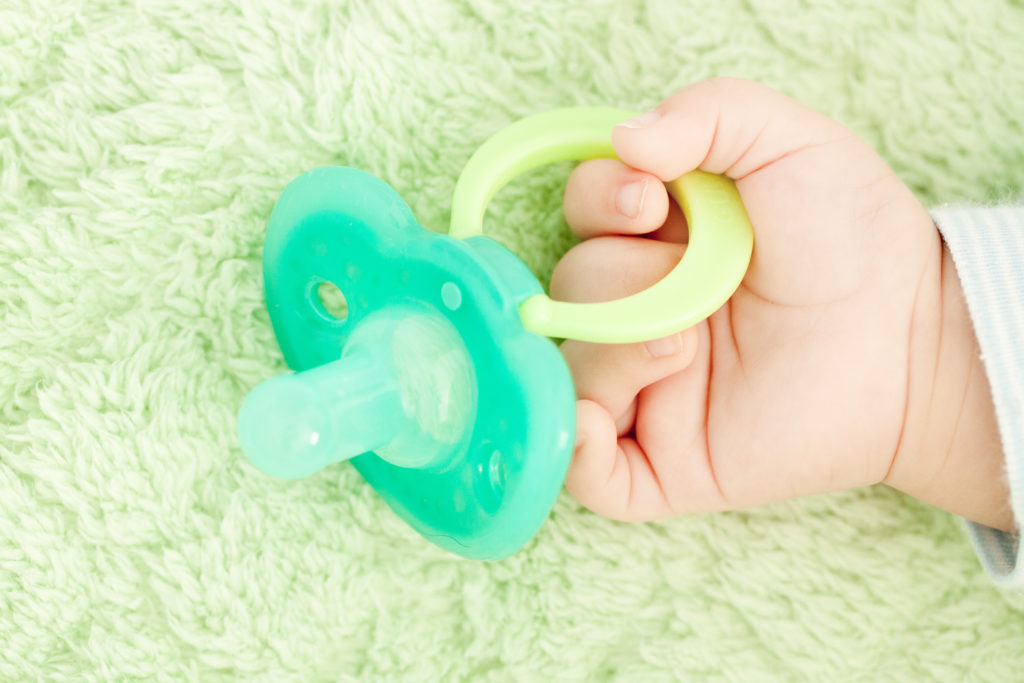
The next type of pacifier is cylindrical. This type of pacifier typically works best for babies, as it doesn’t encourage biting and allows baby to cup their tongue properly. Unless your baby won’t take this shape of pacifier, I recommend using this one above other shapes.1
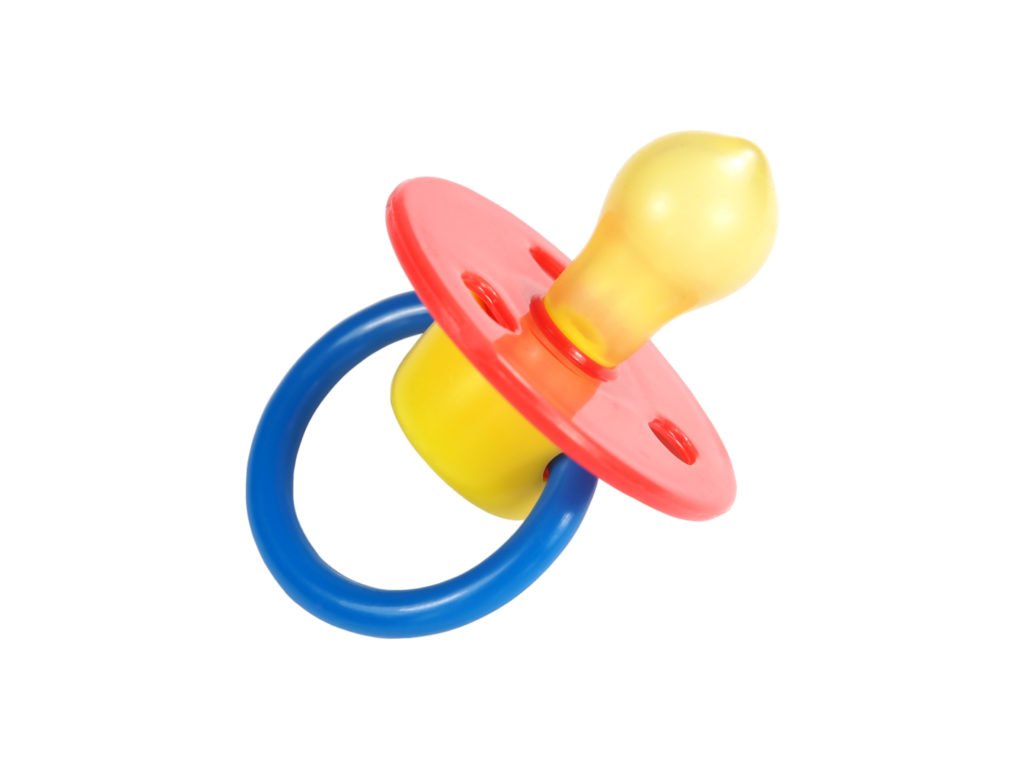
And finally, there are cherry shaped pacifiers. Cherry shaped pacifiers can be easier for babies with high palates to hold in their mouths, however because the shaft of the pacifier is more narrow than the tip, it can encourage a narrow latch at the breast.1
No matter which pacifier works best for your baby, you should make sure their lips are flanged when the pacifier is in their mouth.
When to Wean From The Pacifier
Most experts recommend weaning from the pacifier by four months. After four months, babies can get very attached to their pacifier and it can be much harder to wean from. At this age, your baby is probably starting to bring toys to their mouth, so you can offer teething toys as a substitute for the pacifier.
Did you use pacifiers with your baby? Share why or why you didn’t in the comments.
1Peterson and Marmer, Balancing Breast and Bottle: Reaching Your Breastfeeding Goals
